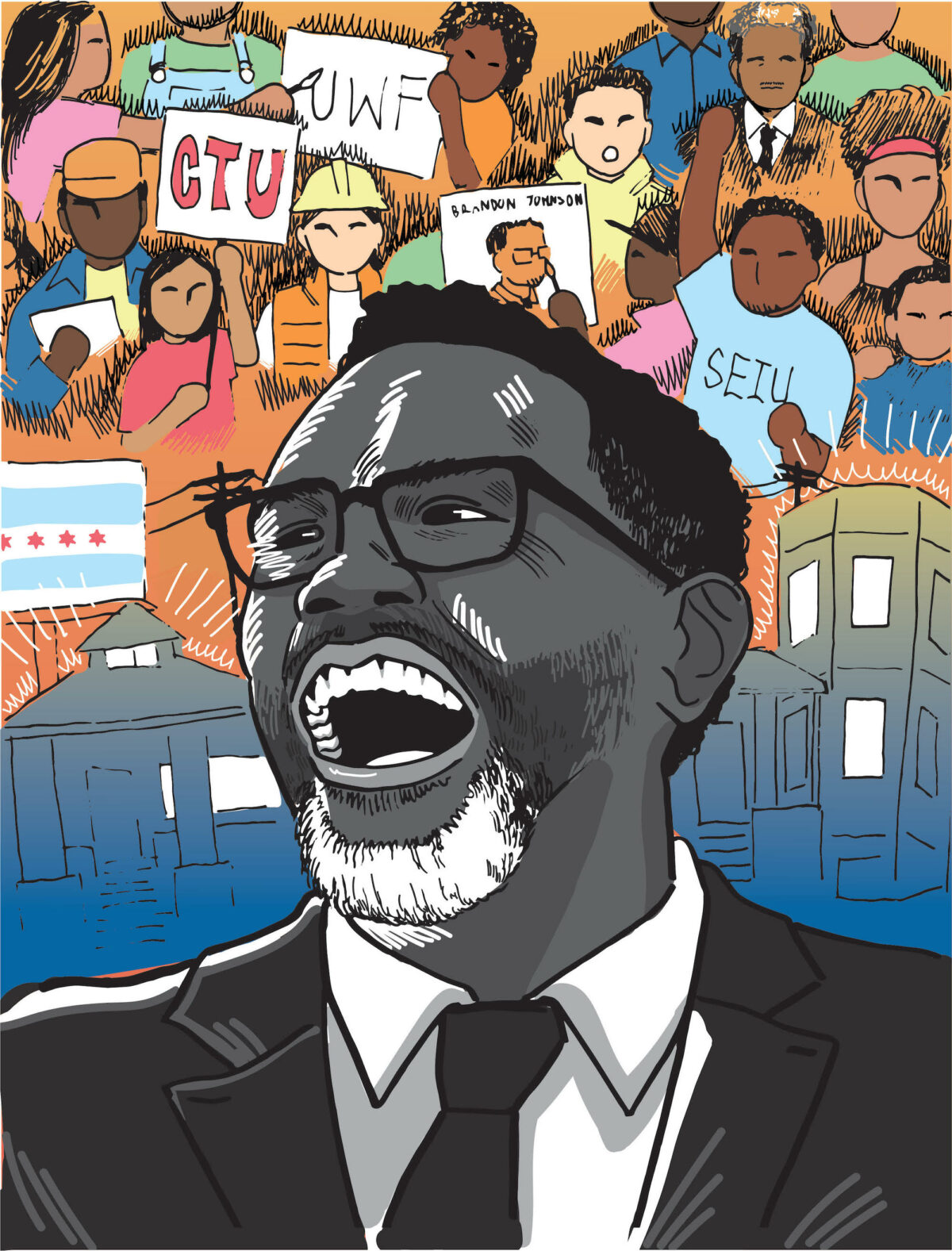Despite analyst predictions that the next mayor of Chicago would not be known for days, possibly weeks, Chicagoans went to bed on election night knowing that Brandon Johnson was their new mayor. After polls closed and nearly all precincts had reported, Johnson had 51.4 percent of the vote and Vallas 48.5 percent.
Around 9:45pm, Vallas conceded at the Hyatt Regency Hotel, saying “I ran for mayor to bring this city together; it is clear based on the results tonight that the city is deeply divided. So tonight, even though of course we believe every vote should be counted, I called Brandon Johnson and told him that I absolutely expect him to be the next mayor of Chicago.”
A few minutes past 10pm, Vallas tweeted, “…It’s critically important that we all come together now and work collaboratively to move our city forward. I thank my supporters and team, and especially my family. Thank you, Chicago.”
The majority of votes were cast after-work hours—turnout at the polls peaked at 5:30pm—and the largest participation came from people ages 55–74, followed by people 25–44, according to Tuesday night data from the Chicago Board of Elections.
Johnson and his family were introduced by Chicago Teachers Union president Stacy Davis Gates at 10:20pm at the Marriott Marquis Hotel. Above the cheers and chants, he beamed, “They said this would never happen. So you know, if they didn’t know, now they know!”
He immediately addressed Vallas’s voters and nonvoters. “To the Chicagoans who did not vote for me, here’s what I want you to know: that I care about you, I value you, and I want to hear from you. I want to work with you and I’ll be the mayor for you, too. Because this campaign has always been about building a better, stronger, safer Chicago for all of the people of Chicago.”
As of press time, the AP count showed that Johnson had 286,647 votes and Vallas 270,775 votes—a difference of nearly 16,000—although the Chicago Board of Election has yet to count some 90,000 mail-in ballots.
Vallas received strong support from the Loop, the Near North Side, the Far Northwest Side, the westernmost parts of the Southwest Side, and the Southeast Side.
Johnson did well in much of the North and West Sides, and the core of the South Side, including along the lakefront.
Of the seven South Side ward races that went to the runoff, two were faceoffs between Lightfoot-appointed alderpeople and challengers, while five took place in wards where the previous alderpeople had retired or unsuccessfully ran for mayor.
In the 4th Ward, which includes Kenwood, Oakland, and parts of Bronzeville, state representative Lamont Robinson beat Prentice Butler, chief of staff for outgoing alderperson and unsuccessful mayoral candidate Sophia King, with more than 66 percent of the vote. The Hyde Park Herald reported that Robinson’s priorities will be “making rent, homeownership and commercial space affordable.”
In the 5th Ward, which includes Hyde Park and parts of Woodlawn, South Shore, and Jackson Park Highlands, labor and community organizer Desmon Yancy is leading Martina Hone, former chief engagement officer in Lightfoot’s administration, with close to 52 percent of the vote. The Herald reported that the race was not yet called since the unreturned 1,700 mail-in ballots could swing the race either way.
In the 6th Ward, which includes parts of Englewood, Chatham, and Great Grand Crossing, Rainbow PUSH field director William Hall beat veteran and retired police officer Richard Wooten with nearly 60 percent of the vote. According to the Sun-Times, Hall will prioritize mental health services and strong schools in the ward and was supported by CTU, Governor Pritzker, and the outgoing alderperson Roderick Sawyer, who left the seat to run an unsuccessful race for mayor.
In the 10th Ward, which includes East Side, Hegewisch, and South Deering, police officer Peter Chico beat labor organizer Ana Guajardo with 59 percent of the vote. Chico supports hiring more cops in the ward and bringing in businesses that can compete with cheaper products across the state line in Indiana.
In the 11th Ward, which includes Bridgeport and Chinatown, Lightfoot-appointed sitting alderperson Nicole Lee beat Chicago Police instructor Anthony Ciaravino with nearly 62 percent of the vote. Before taking the seat, Lee was director of social impact and community engagement at United Airlines and is Chicago’s first-ever Chinese-American alderperson. The ward was redrawn last year to include larger portions of Chinatown, where Lee had the most support. Ciaravino, who had ties to the Daleys, was stronger in Bridgeport. Lee was appointed to the seat last year after former Ald. Patrick Daley Thompson was convicted for tax fraud.
In the 21st Ward, which includes Brainerd, Fernwood, and West Pullman, community organizer Ronnie Mosley beat retired firefighter Cornell Dantzler with 52 percent of the vote. Mosley had the support of CTU, Governor Pritzker, and outgoing alderperson Howard Brookins Jr., who is retiring after holding the seat for twenty years.
In the 24th Ward, which includes North Lawndale, Lightfoot-appointed sitting alderperson Monique Scott beat local businessman Creative Scott (no relation) with 67 percent of the vote. Monique attracted some scrutiny in her appointment last year since she’s the sister of the previous alderperson, Michael Scott Jr., who vacated the seat to take an executive position with Cinespace Studios. According to the Sun-Times, Monique will work with the North Lawndale Employment Network to bring jobs to the ward and decrease violence.
Johnson and the victorious alderperson candidates will be sworn in on May 15.


It would also be interesting to see the percentage of voter turnout by precinct (if the number of registered voters per precinct is known).
Hi CS,
In the dropdown menu on the bottom right corner of the map, there’s an option titled “Registered Voters/Ballots/Turnout.” This shows percentage of voter turnout at the precinct level.
– Adam